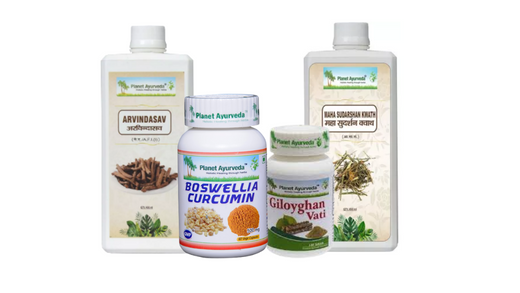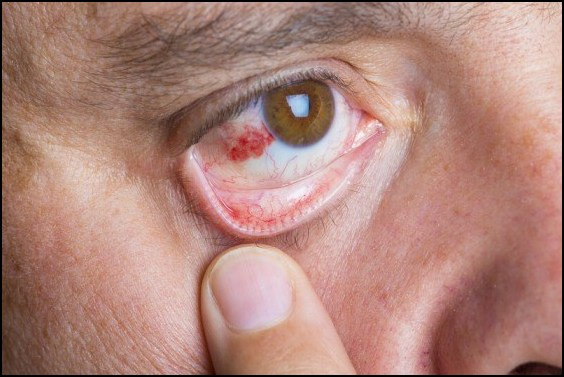Treatment of Kawasaki Disease with Herbal Remedies
Abstract
There are many rare diseases in the world and some of them are restricted to childhood. These rare conditions can leave their impact on a child’s body or a child can fully recover. The whole scenario depends on the type of condition a child is suffering from. One of such conditions is kawasaki disease which is also known as mucocutaneous lymph node syndrome. In this article we will discuss entirely about this condition in detail and also about its Ayurvedic aspect. As mentioned before this disease is a condition that develops in children and only the ones younger than 5 years of age.

Introduction
Kawasaki disease was first described in Japan by Tomisaku Kawasaki in 1967 and the first case outside Japan was reported in 1976 in Hawaii. Now, at present the Kawasaki has become one of the leading causes for heart diseases in children especially in North America and Japan. The incidence of kawasaki disease is highly noticed in Japan. Japan has an annual rate of 130-140/100,000 children under the age of 5 years. In this condition the etiological factors remain unknown. Generally the diagnosis is done on the basis of clinical signs. Sometimes if not diagnosed properly the condition can become crucial and fatal as well.
Causes of Kawasaki Disease
As mentioned earlier, the cause of this condition is not known.
Symptoms of Kawasaki Disease
- Kawasaki disease is a condition in which there is inflammation of blood vessels. Such inflammation can result in heart disease in kids but things can be avoided before getting worse if treated properly. The typical symptoms of kawasaki are following which also help in diagnosing the condition certainly well:
- High fever (generally greater than 101 F) and that can last for more than 5 days. It doesn’t go away even after administration of antipyretic.
- Rash or peeling of skin which is often between chest and legs. These Rashes are also common in the groin area.
- Swelling and redness in hands and feet bottoms
- Red swollen eyes
- Swollen lymph nodes especially of neck
- Swollen and strawberry tongue
- When the condition switches to the second phrase the child will complain of pain in joints along with belly pain. Stomach trouble along with diarrhoea and vomiting. Peeling of skin will also be observed, especially of hands and feet.
Kawasaki Disease Diagnosis
The Diagnostic Factors for Kawasaki Disease must Fulfil the Following Criteria:
- High fever persisting for 5 days
- Bilateral non exudative conjunctivitis
- Polymorphus exanthems (this can be understood as the red rash over body in many forms)
- Cervical lymph node enlargement or neck lymph node enlargement over 1.5cm
- Diffuse oropharyngeal erythema, fissured lips
- Strawberry tongue (Prominent papillae)
- Changes in extremities such as indurated edema of hands and feet, palmar and solar erythema and desquamation of digits.
Other than the clinical symptoms there are certain tests which are elevated from their normal levels. Otherwise no specific tests are available to diagnose the condition. Tests involve:
- Elevated Sedimentation levels
- Mild fall in haemoglobin levels
- Leukocytosis (raised white blood cell count)
- Serum interleukin 1-beta are elevated
- Interferon levels are raised
- Alpha and Gamma Cryoprecipitates levels are raised
Treatment of Kawasaki Disease
The treatment of kawasaki must be provided as soon as possible because generally the chances of situation worsening are more if treatment or proper diagnosis is not done. The treatment of kawasaki includes:
- Gamma globulin
- Aspirin
- Along with these antipyretics are also given
Risk Factors for Kawasaki Disease
Age: Children under the age of 5 years
Sex: Boys are slightly more exposed to this disease than girls
Ethnicity: Japanese or Korean are at higher risk of developing this condition due to Asian or Pacific Island descent.
Ayurvedic Aspect of Kawasaki Disease
Kawasaki disease is basically a condition whose cause is not known in modern science but Ayurveda understands it as an immunocompromised situation. When due to some peculiar habits or changes in eating patterns the digestive fire of the child hampers then due to utpatti of ama dosha, vitiation of all three doshas happens. The dosha vitiation results in low immunity and thus makes the child prone for infections or developing some unexplained conditions like kawasaki disease. So, in this scenario we must guide patients with herbal formulations that are known for immunomodulatory effect along with some formulations that help in lowering the inflammation and fever as well.
Herbal Formulations for Kawasaki Disease by Planet Ayurveda
Planet Ayurveda is a renowned Ayurvedic company which deals with the manufacturing and preparation of herbal formulations. These formulations are prepared using potent herbs and their extracts which are really effective in managing many conditions including kawasaki disease. The formulations or products prepared by Planet Ayurveda do not contain any kind of adulterants, dyes, additives, fillers etc. These medications are really potent in supporting the recovery of the body from this condition and hence giving positive noticeable results. The medication or formulations offered by Planet Ayurveda for the management of Kawasaki Disease are as follows:
- Arvindasav
- Boswellia Curcumin
- Giloyghan Vati
- Mahasudarshan Kadha
Product Description
1. Arvindasav
The arvindasava is herbal preparation which is prepared using a variety of herbs and is specially used in children. Arvind means child and asava is decoction, so it’s for children only, which helps in all kinds of child related disorders. Arvindasava helps in boosting the immunity of children and relieves many symptoms in kawasaki disease. It helps in betterment of a child’s health gradually and also helps in developing an immunity for later stages too. Even when a child is healthy this syrup or decoction can be given as a health tonic to children of all age groups.
Dosage: Two tsp twice daily after meals with equal amounts of lukewarm water.
2. Boswellia Curcumin
Boswellia Curcumin is a formulation which is prepared with standardised extract of shallaki (Boswellia serrata) and curcumin (Curcuma longa) and is filled with anti-inflammatory properties. These two herbs work best as an agent to reduce the inflammation and also have their effect on pain. They also play an important role in improving circulation. As the inflammation subsides the symptoms like blood vessel inflammation resulting in heart conditions subsides. It enhances the immunity and increases the body capacity to fight infections. It also protects the cells against free radical damage and works as an effective source of antioxidants. Moreover, it is also effective as a formulation which has antibacterial action due to the presence of curcumin.
Dosage: One capsule twice daily after meals with lukewarm water.
3. Giloyghan Vati
Giloyghan vati has Giloy (Tinospora cordifolia) and is very effective and improves all over the body’s health. It is very beneficial in enhancing metabolism and also behaves as an antipyretic. It regulates speedy recovery of the body and increases the body’s capacity to fight infections. The herb has a mild anti-inflammatory effect as well. This formulation helps in rejuvenation of cells along with is beneficial in restoring the normal functioning of various systems. Giloy ghan vati has been known since ages for its wonderful effects as an immunomodulatory agent. The giloy also has a detoxification effect that’s why giloyghan vati has a marvellous effect in kawasaki disease.
Dosage: Two tablets twice daily after meals with lukewarm water.
4. Mahasudarshan Kadha
Mahasudarshan kadha is a classical preparation which has Neem (Azadirachta indica), Kiratatikta (Swertia chirata), Guduchi (Tinospora cordifolia), Parpat (Fumaria parviflora) and Bharangi (Clerodendrum serratum) as its ingredients. These ingredients make it a perfect antibacterial agent, antimicrobial agent and antiviral agent as well. Due to the presence of giloy the formulation also possesses antipyretic properties. The product gives very great results as an immune boosting agent as well. In malaria, this formulation has really good results and it also removes toxins from your body really well. Moreover, the mahasudarshan kadha is having really effective results as an ama pachak agent which means it helps in digesting the accumulated endotoxins.
Dosage: One and half tsp twice daily after meals with lukewarm water.
Contact Planet Ayurveda Support Team to provide you the costing/ordering and delivery information at – costing.planetayurveda@gmail.com or Call at 0172-521-4040 (India), +91-172-521-4040 (Outside India) or Whatsapp at (+91) 842-749-4030.
Conclusion
Conditions like kawasaki are developing in many countries and if we do not control our habits or our children’s habits then the day is near that a child no longer has to be the Asian or Pacific Island descendant for getting kawasaki disease. It isn’t like that if the situation is mostly restricted to Japan or Korea then it can not happen in other parts of the world. Honestly speaking it can and it is. So being parents it’s our responsibility to take a step forward and should think of ways to feed our children with the healthiest food instead of feeding them with prepacked or ready to cook food. In case of any query kindly visit WWW.PlanetAyurveda.Com



